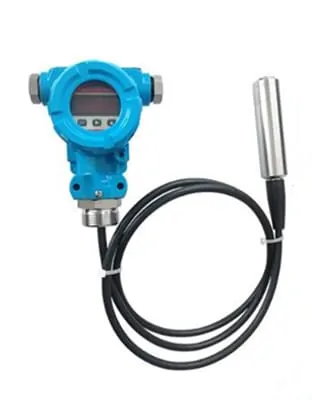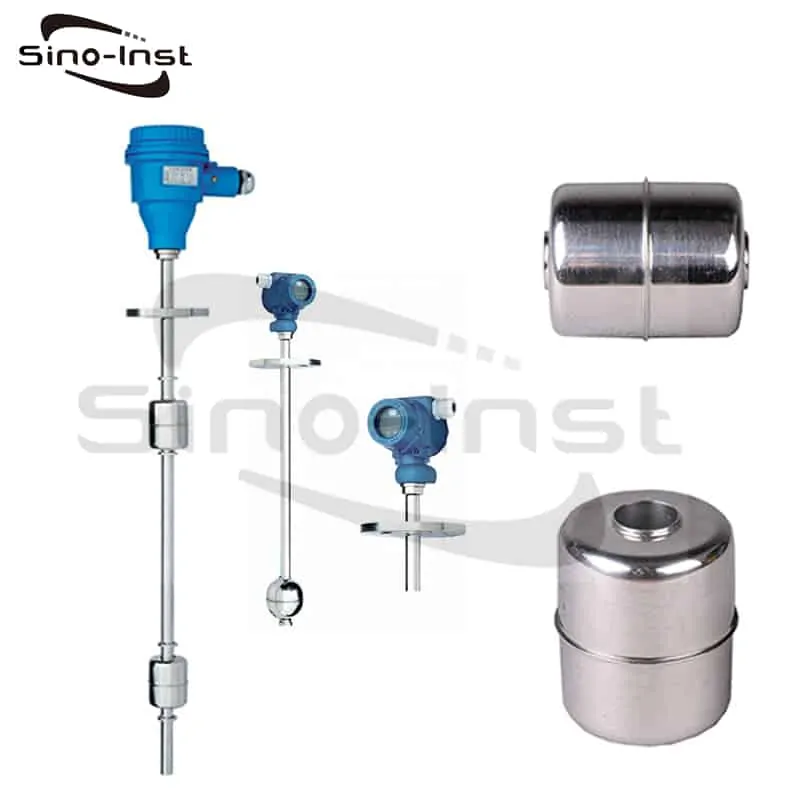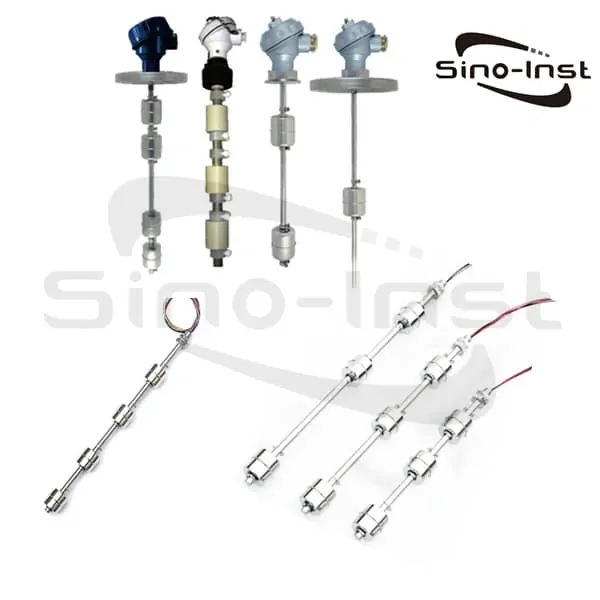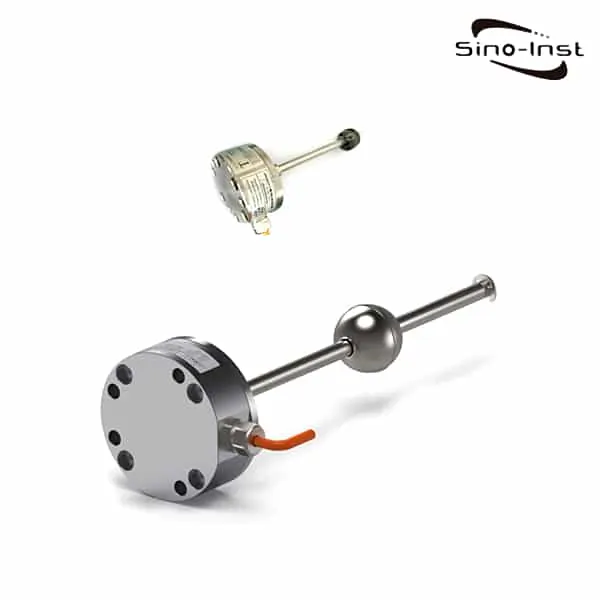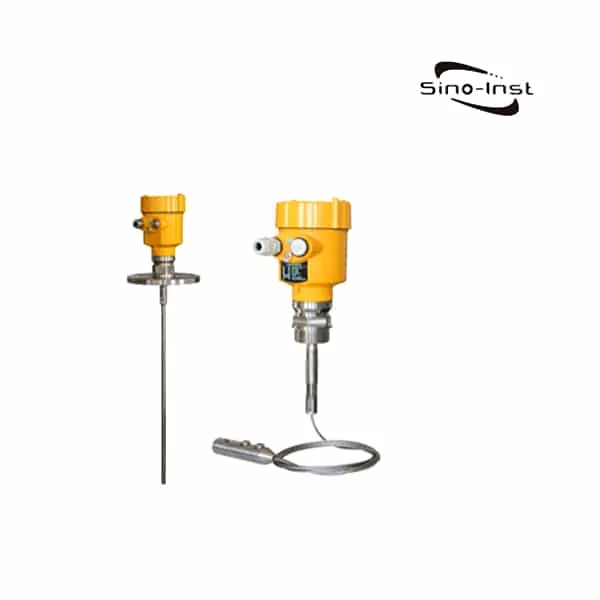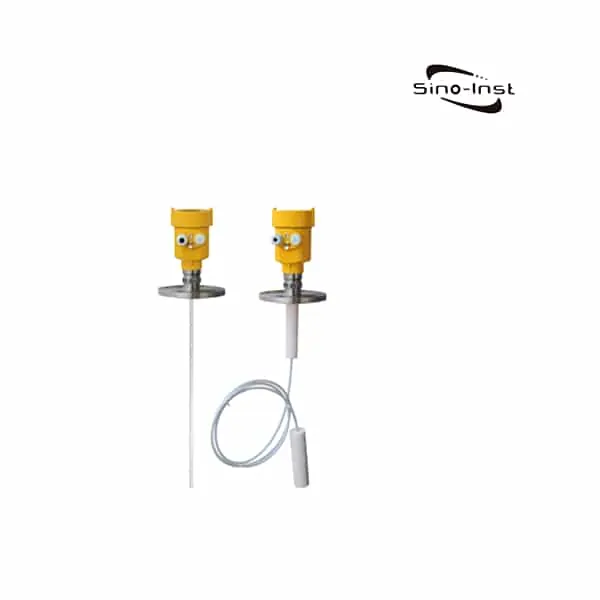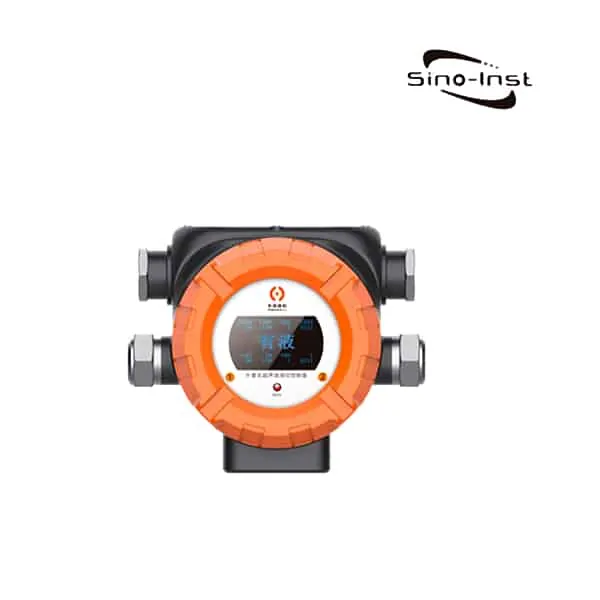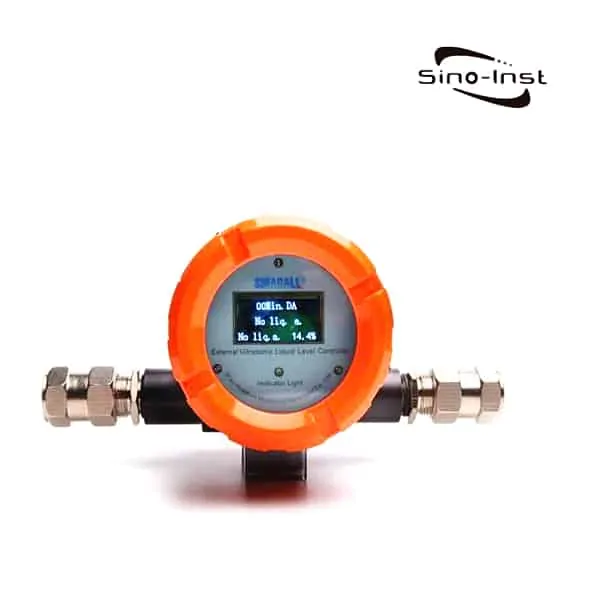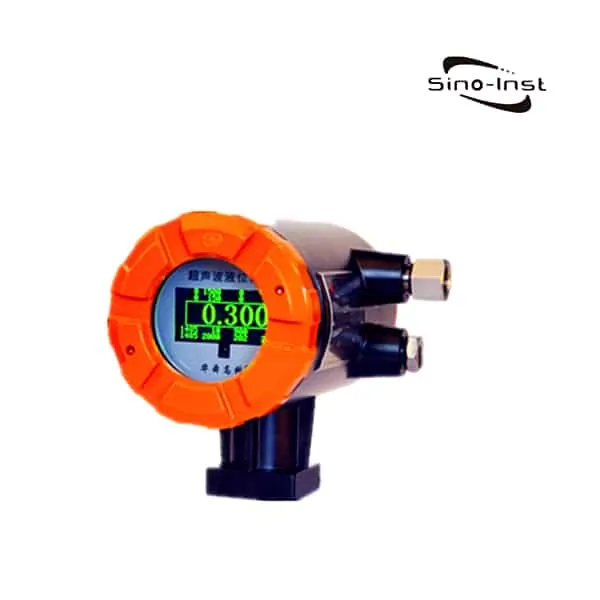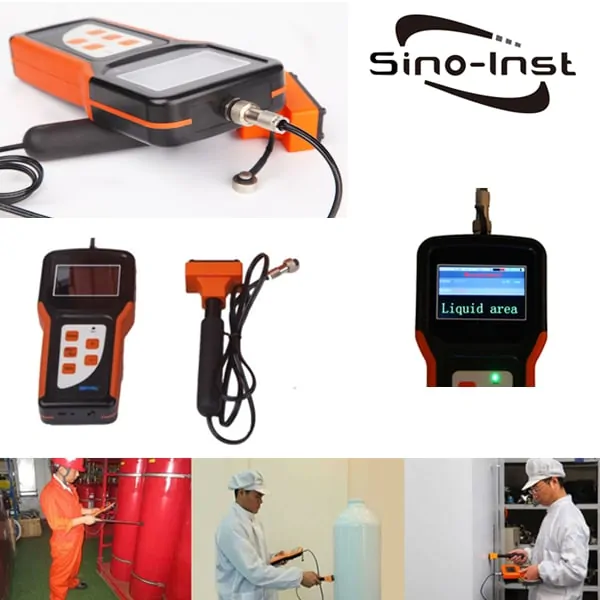Monitoring the level of liquid chlorine storage tanks is a common problem in the chlor-alkali industry.

In the chlorine production process, sulfuric acid dehydration is used to dry the chlorine. There will be a small amount of acid mud in the liquid chlorine. Liquid chlorine is highly toxic and corrosive. Liquid chlorine storage tank level measurement must take into account the requirements of corrosion resistance, safety requirements, reliability, convenient installation and easy maintenance.
This article combines the application and comparison of the actual use of the liquid chlorine storage tank level measurement level gauge, which has practical guiding significance for the selection of the liquid chlorine storage tank level gauge in the chlor-alkali industry under the existing technical conditions.
Liquid Chlorine Storage Tanks chemical properties
Liquid chlorine is a yellow-green liquid. Boiling point -34.6℃. Melting point -103℃. It is vaporized into gas under normal pressure. Inhalation of the human body can be severely toxic, severely irritating and corrosive. It burns and explodes when mixed with other flammable gases in sunlight. Chlorine is a very reactive element and can react with most elements (or compounds).
Liquid chlorine is the basic chemical raw material, which can be used in metallurgy, textile, papermaking and other industries, and is the raw material for the synthesis of hydrochloric acid, polyvinyl chloride, plastics, and pesticides. Packed in high-pressure steel cylinders.
Hazard characteristics: Liquid chlorine will not burn, but it can support combustion. Generally combustible materials can be burned in chlorine gas, and general flammable gas or steam can also form explosive mixtures with chlorine gas.
Chlorine gas can react violently with many chemicals such as acetylene, turpentine, ether, ammonia, fuel gas, hydrocarbons, hydrogen, metal powder, etc. to explode or generate explosive substances. It is almost corrosive to metals and non-metals.
Liquid chlorine is generally used after gasification and has a wide range of uses. It is a strong oxidant. It is used for bleaching in the textile and paper industry, purification and disinfection of tap water, refining of magnesium and other metals, and production of pesticides, detergents, plastics, rubber, Various chlorine compounds such as medicine.
Liquid chlorine is a highly toxic substance, and the emergency code number is 31001. Should be stored in a cool, ventilated warehouse, special warehouse for special storage. Do not co-store or carpool transportation with combustibles, explosives and ammonia.
Level gauges types used for tank level measurement
In the tank level measurement, the following types of level gauges have a large number of practical applications:
1.Buoyancy level gauge
Such as float level gauge, flap level gauge, float level gauge, floating plate level gauge, float level gauge, steel belt level gauge. This type of buoyancy level gauge has measurement accuracy. However, the on-site installation and structure are more complicated, there are many mechanical parts, and the daily maintenance amount is very large in the actual application process.
2.Pressure type level gauge
Pressure transmitters, single-flange level transmitters, and drop-in level transmitters are often used for liquid level measurement in open vessels. Differential pressure transmitters and remote double-flange differential pressure transmitters are often used for liquid level measurement in closed vessels. Differential pressure level gauges are easily affected by medium density and temperature changes during measurement, and the maintenance of accessories is large. If the liquid level of a strong corrosive medium is measured, the instrument is expensive.
Extended reading: Hydrostatic Level Measurement
3.Microwave level meter
Ultrasonic level gauges, radar level gauges, and guided wave radar level gauges are all microwave level measuring instruments that can be used for solid and liquid level measurement. Although these level gauges have advanced technology and improved measurement accuracy, they are suitable for pressure vessels that store light hydrocarbons, liquid ammonia, and liquid chlorine.
Due to the low dielectric constant of the gas phase medium, volatility and a large number of droplets, it will absorb and affect the reflection of electromagnetic waves. Interference to the level measurement of the microwave level meter, resulting in unstable measurement value of the level meter.
Extended reading: What is the difference between ultrasonic and radar level transmitters?
Featured Level meters
If you need to measure river water level, open channel level, etc. The Ultrasonic Liquid Level Sensor can be used for non-contact continuous level monitoring.
Application of different level gauges in Liquid Chlorine Storage Tanks
Practice is the only criterion for testing truth. Each level gauge has its advantages and disadvantages, and the application performance of different level gauges under the same working conditions is not the same.
In this article, Sino-Inst shares with you the application experience of different types of level gauges in the level measurement of liquid chlorine storage tanks in the plant.
1.Application of radioactive level gauge in Liquid Chlorine Storage Tanks
The cobalt 60 radioactive level gauge is used to perform high-limit measurement and alarm on the liquid level of the liquid chlorine storage tank.
The specific application is: installing cobalt 60 radiation sources and receiving devices on both sides of the high point of the liquid chlorine storage tank.
The radioactive level gauge produces different amounts of radiation when the storage tank is full or dissatisfied. The meter judges whether the liquid level of the storage tank exceeds the limit according to the change of the radiation amount and sends out the corresponding switch alarm signal.
The cobalt 60 radioactive level gauge is installed on the outside of the storage tank and does not come into contact with the liquid chlorine. There is no potential for chlorine leakage, and the position measurement is accurate and reliable. However, the radioactive level gauge cannot realize continuous measurement and monitoring of the liquid level and the cobalt 60 radioactive source is easy to check Instrument maintenance workers cause personal hazards and are therefore not suitable for production.
2.Application of top-mounted float level gauge in Liquid Chlorine Storage Tanks
The top-mounted float level gauge is used to measure the liquid level of the liquid chlorine storage tank. The top-mounted float level gauge is inserted into the liquid chlorine storage tank from the top.
When the liquid level in the liquid chlorine storage tank changes, the float floats up and down along the measuring tube with the change of the liquid level. The magnetic steel in the anti-corrosion float continuously attracts the reed switch relays in different positions. The liquid level is shown by the indicator position.
The top-mounted float level gauge works well in the initial stage of use. But with the passage of time, its drawbacks have gradually emerged. The top-mounted float level gauge needs to be in contact with liquid fluorine when measuring, and it is prone to fluorine gas leakage. Site environment It is highly corrosive, and the measuring rod of the reed switch relay is often desoldered due to corrosion. The failure rate is very high and the maintenance workload is large, which affects normal production.
The acid mud contained in the liquid chlorine adheres to the floating ball steel pipe. It causes the floating ball to move and even gets stuck, causing the level gauge float to not follow the liquid level change normally. A false liquid level is generated and the process production operation is affected. It is not fully applicable to liquid chlorine storage tank level measurement.
3.Application of capacitive level gauge in Liquid Chlorine Storage Tanks
Use a capacitive level meter to measure the level of the liquid chlorine storage tank. The capacitive level gauge is inserted from the top of the liquid chlorine storage tank, and the capacitance of the level gauge changes in proportion to the change height of the liquid chlorine level in the storage tank. This principle is used to achieve continuous measurement of the liquid chlorine storage tank level.
Capacitance level meter can meet the continuous measurement of liquid chlorine storage tank level, but it has the following disadvantages:
The measuring electrode of the capacitance level meter needs to be inserted into the liquid chlorine storage tank, and chlorine leakage is likely to occur during installation or disassembly, which endangers personal safety.
After the capacitance level gauge has been working for a period of time, the acid mud contained in the liquid chlorine will adhere to the inner and outer electrodes of the capacitance level gauge, causing changes in capacitance and large errors in measurement.
Due to the high toxicity of chlorine gas, the malfunctioning meter cannot be disassembled and repaired at any time, causing the malfunction meter to be unable to be repaired for a long time.
Due to the above reasons, the capacitance level meter is gradually eliminated after a period of use.
4.Application of side-mounted magnetic flap level gauge in liquid chlorine storage tanks
The side-mounted magnetic flap level gauge is connected to the storage tank with a measuring tube. The measuring tube is equipped with a magnetic float. The outside of the tube is composed of two-color porcelain rollers side by side to form an indicator. The magnetic float moves up and down with the change of the liquid chlorine level, driving the magnetic roller Rotate. The magnetic roller therefore changes color to indicate the liquid level.
The side-mounted magnetic flap level gauge has a good effect in the initial stage of use. Because the indicator is completely isolated from the medium, the effect of corrosion is overcome.
The magnetic float is sealed in the measuring tube to eliminate the hidden danger of chlorine leakage and ensure safety.
The side-mounted magnetic flap level gauge is accurate and reliable in measurement and indication, with very low failure rate and little impact on production.
The disadvantage is that the measuring tube wall is frozen, and the acid sludge contained in the liquid chlorine will also cause the magnetic float to freeze or jam when working for a long time. This will cause measurement errors. It will seriously affect the process and production operations. Therefore, the liquid chlorine storage tank level cannot be fully applied measuring.
5.The application of external level gauge in Liquid Chlorine Storage Tanks
A. Working principle of external level gauge
The external measuring level gauge is an intelligent field transmitter type instrument. The external measuring level gauge flameproof host is installed near the liquid chlorine storage tank. The measuring head of the external measuring level gauge is tightly attached to the outer wall of the container. It depends on the detection container wall The tiny mechanical vibration on the upper side becomes an electric signal and is transmitted to the external measuring level gauge flameproof host. After this signal is processed, it becomes a digital signal and is sent to the CPU.
The instrument host filters and recognizes the various vibration waves of different modes obtained by the measuring head, and removes signals that have nothing to do with the change of the liquid level. It uses special software to perform complex calculations on the waveform of the signal, and uses artificial intelligence algorithms to calculate it. Analysis. To calculate the liquid level.
Therefore, the external level gauge is to continuously and accurately measure the height of the liquid level in the tank from the outside of the tank. It does not touch the liquid and gas in the tank at all, realizing a true isolation measurement.
Extended Reading: Laser level transmitter for water
B. Advantages of external level gauge
The external level gauge has the following advantages:
①It can be used in the most demanding environment. It can measure liquids under any pressure. It can measure the most toxic liquids. It can measure the most corrosive liquids. It can measure absolutely sterile or extremely pure liquids.
②Safe to use. When measuring toxic, corrosive, pressure, flammable, explosive, volatile, and easy to leak liquids. Because the measuring head and the instrument are outside the container. During installation, repair, and maintenance operations, the operator does not touch the tank The liquid and gas inside are very safe. Even if the instrument is damaged or repaired, there will never be leakage.
③Meet environmental protection requirements. Neither liquid nor gas leaks. It does not pollute the environment and is a green instrument.
④ Installation and maintenance are the most convenient and economical. Because the liquid level gauge does not need to open a hole in the container, does not need a flange, or a connecting pipe, it is very convenient to install and maintain. The external level measuring instrument does not require manual calibration during installation and use, which is very convenient.
⑤High reliability and long service life. Because there are no mechanical moving parts in the measuring head of the liquid level meter and the meter, it is strictly sealed and isolated from the outside world. It will not produce abrasion or corrosion, it is very durable and reliable, and the maintenance workload is very small.
⑥ Accurate measurement. The external level measuring instrument can be continuously and automatically calibrated to ensure the highest measurement accuracy. In addition, the external level measuring instrument is divided into temperature compensation type, its measurement accuracy reaches 1%. Self-calibration type, its measurement accuracy reaches 0.2%. Among them, the self-calibrating liquid level gauge does not need manual calibration.
C. Disadvantages of external measuring liquid level gauge
① There are still some shortcomings of the external measurement type level gauge. The meter itself has a measurement dead zone. The external measurement type level gauge can only display a low level alarm within 200mm of the bottom of the container and cannot indicate an accurate level value. Since the company’s liquid chlorine storage tank level measurement monitoring is mainly to ensure high-level accurate monitoring, this defect does not affect normal use.
After analysis and comparison, it is believed that from the perspective of safe production and maintenance work, the external measurement type level gauge is currently the most suitable instrument for liquid chlorine storage tank level measurement.
②The advantage of the external measurement type level gauge is that it is easy to install, and there will be no hidden dangers of chlorine leakage and corrosion of the instrument.
According to reports from other petrochemical plants: the external measurement type level gauge will also have measurement failures after a period of time, mainly due to changes in the paste medium and gap, which is a common problem. This is also a problem that the tuning fork limit switch can avoid.
Therefore, the biggest obstacle to the application of external ultrasonic level meters is the need to achieve long-term all-weather operation after installation, which is a technical problem.
In addition, for instruments that have problems on site, the supplier must respond to and solve the problems in a timely manner. This is a service problem.
Featured external level gauges in Liquid Chlorine Storage Tanks
HS-2000 External Mounted Ultrasonic Tank Level Sensor- (referred to as “external level gauge”). It adopts advanced signal processing technology and high-speed signal processing chip. It breaks through the influence of container wall thickness. Realizes the height of the liquid level in the closed container True non-contact measurement.
The ultrasonic liquid level sensor (probe) is installed directly under the outer wall (bottom) of the container under test. Calibrate the outer wall of the probe. There is no need to open holes for the container to be tested, easy to install, and does not affect production. It can accurately measure the level of various toxic substances, strong acids, strong alkalis and various pure liquids in high-pressure airtight containers.
The HS-2000 External Mounted Ultrasonic Tank Level Sensor has no special requirements for the material of the liquid medium and the container. The explosion-proof design is adopted to meet the explosion-proof requirements.
You may like:
- Quickly Set Level Monitoring System for Industrial Holding Tanks
- How to check Level in Underground Tanks? What Tank Level Indicators to Choose?
- Enhancing Marine Tank Monitoring with Advanced Marine Water Tank Level Sensors
- Shopping the Right High Temperature Level Sensor: 80℃~1000℃
- Cooling Tower Level Sensors for Water Level Monitoring and Water Level Control
Sino-Inst offers over 20 Liquid Level gauges for level measurement. About 50% of these are fuel level meters, 40% is the tank level sensor.
A wide variety of Liquid Level gauges for level measurement options are available to you, such as free samples, paid samples.
Sino-Inst is a globally recognized supplier and manufacturer of Ultrasonic Tank Level measurement instrumentation, located in China.

Wu Peng, born in 1980, is a highly respected and accomplished male engineer with extensive experience in the field of automation. With over 20 years of industry experience, Wu has made significant contributions to both academia and engineering projects.
Throughout his career, Wu Peng has participated in numerous national and international engineering projects. Some of his most notable projects include the development of an intelligent control system for oil refineries, the design of a cutting-edge distributed control system for petrochemical plants, and the optimization of control algorithms for natural gas pipelines.

